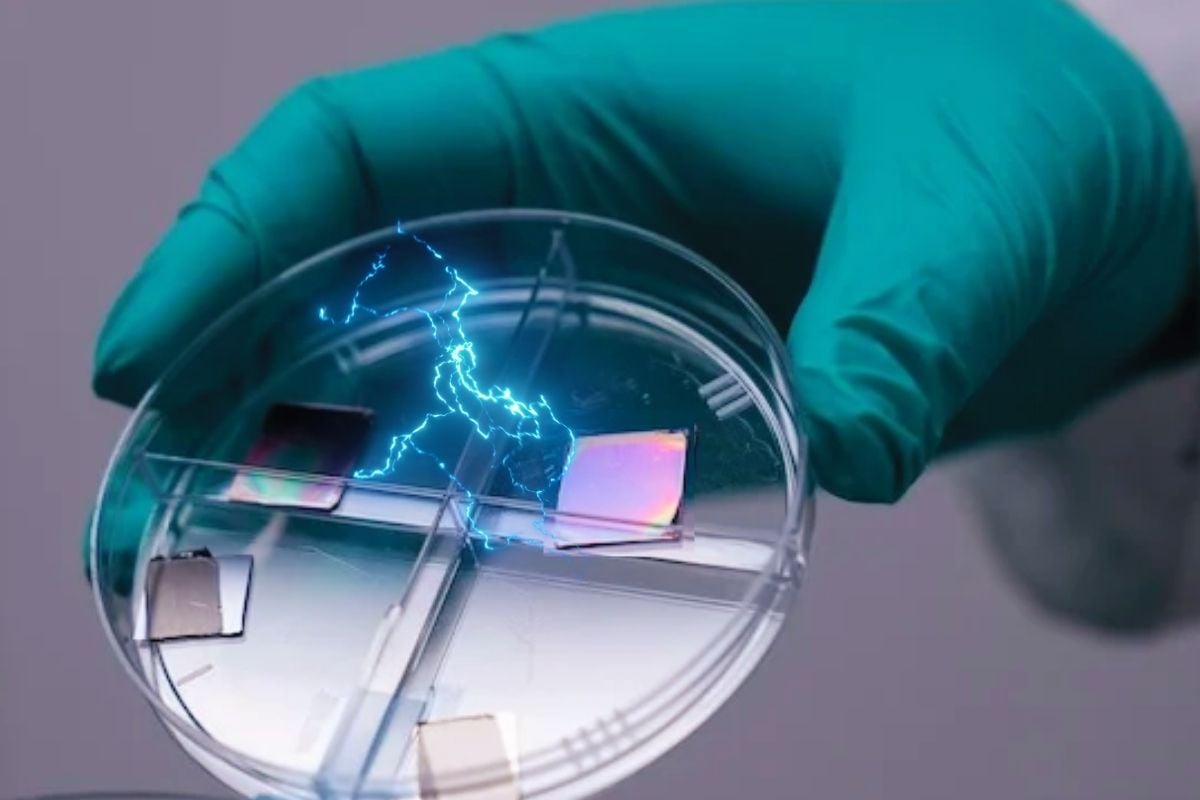The United States is buzzing over a breakthrough invention that promises to tame renewable energy’s toughest challenge using advances in quantum physics. Early prototypes show heat-to-electricity conversion at up to 60% efficiency, a number that turns storage headaches into solvable engineering problems. For households and grids alike, the ability to store heat and dispatch power later could make clean energy far more reliable.
A giant step toward clean energy storage
The core is a thermal energy storage (TES) system coupled to a thermophotovoltaic (TPV) converter, which turns heat into electricity using tailored light. Instead of charging batteries, the system captures heat, stores it efficiently, then emits precisely tuned photons for solar-like cells to harvest power. By decoupling generation from sunlight and wind, this approach unlocks round-the-clock renewable supply.
Intermittency, the main obstacle
Wind and solar are clean but inherently intermittent, swinging with weather and daily cycles. That volatility strains the grid, forcing backup from fossil plants or expensive battery fleets. Scalable thermal storage with high-efficiency conversion directly targets that pain point, smoothing production and stabilizing demand.
The thermal emitter that makes it work
At the heart of the system is a high-performance emitter that converts stored heat into tightly controlled radiation. Traditional TPV emitters waste energy in broad spectra, but this design channels emission where photovoltaic cells are most sensitive. By minimizing off-band losses, researchers raised net efficiency to a striking benchmark around 60% in early tests.
Quantum engineering of light
The breakthrough relies on nanostructured materials that act like microscopic resonators, shaping which photons are produced at high temperatures. Arrays of silicon nanocylinders on a tungsten substrate create collective optical modes that favor high-value photons. This selective emission is a practical triumph of quantum-informed design applied to macroscale energy.
“Store heat when the sun shines, turn it into power when it doesn’t—this is how we make renewables truly dispatchable.”
From lab to grid
In practice, a TES-TPV system can absorb surplus solar at midday, hold that energy as high-temperature heat, then deliver electricity after sunset. It can also harvest industrial waste heat, transforming lost thermal energy into useful power. Remote bases, island grids, and space missions stand to benefit from compact, durable modules.
Cleaner, safer, and more resilient
By relying less on conventional batteries, this pathway can reduce dependence on certain scarce minerals and lower lifecycle environmental impact. Thermal systems are often simpler to recycle and easier to scale with familiar high-temperature materials. That means fewer supply chain bottlenecks and improved long-term resilience.
Why the physics matters
Quantum-scale structuring lets engineers “filter” light so that most emitted photons match the photovoltaic bandgap sweet-spot. The result is higher conversion efficiency without raising operating temperature beyond material limits. Better spectral control also reduces cooling loads and improves overall economics.
What this could change
If commercialized, this technology could shift how utilities plan for peak demand, evening out renewable variability without fossil peaker plants. It may enable larger shares of wind and solar on the grid without sacrificing reliability. And it could bring clean power to regions where batteries are too costly or hard to maintain.
What to watch next
Early findings are promising, but scale-up and durability will determine real-world impact. The next phase will focus on integrated prototypes, manufacturability, and grid-level pilots. Key milestones to monitor include:
- Higher-temperature storage media with long-cycle life.
- Emitters with tighter spectral selectivity and thermal stability.
- PV cells optimized for TPV spectra and low-loss coupling.
- Safe, low-cost insulation that preserves heat over long durations.
- Field trials proving multi-year reliability and grid value.
Challenges and open questions
Engineers must confirm that nanostructured emitters endure thermal cycling and maintain spectral precision at extreme temperatures. They must also tame heat-to-light-to-electricity losses in full-scale units, not just in labs. Finally, costs must beat incumbent storage for utilities to invest at scale.
A practical path to 24/7 renewables
Even with these hurdles, the trajectory is clear: better control of light at the quantum level turns stored heat into dispatchable electricity with remarkable efficiency. That makes wind and solar far more predictable, trimming curtailment and cutting fossil backup. If progress continues, this quietly elegant physics could help build a stable, affordable, and fully renewable grid.

